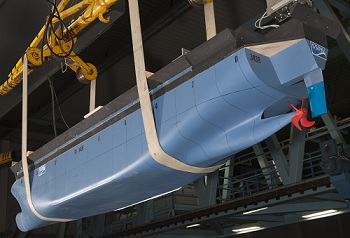Propelled towards more efficient ships and boats

Related topics
Innovation Transport Smart, green and integrated transport France Germany Italy Netherlands Poland Sweden United Kingdom Norwaydate: 05/02/2015
Project: Strategic Research For Innovative Marine...
acronym: STREAMLINE
See also: CORDIS
If you think that European shipping is in decline – that our maritime heyday was a thing of history – then think again. You only need to visit an average port to appreciate the vast volume of goods that travel by sea.
About 40% of EU goods are transported by water at some point in their journey from production to consumption. As a major European industry; shipping accounts for 4% of the EU's total greenhouse gas (GHG) emissions.
“Even a slight increase in ship efficiency could dramatically reduce sea transportation costs and emissions, which would make the industry more competitive. European businesses and citizens have a lot to benefit from more energy efficient shipping,” says Paul Greaves from Rolls Royce, who recently led an EU-funded project investigating alternative ship propulsion systems.
The STREAMLINE project brought together 22 partners from 8 countries to study alternative propulsion and hull hydrodynamics. Project partners focused on three promising technologies: large area propellers (LAPs), distributed propulsion for inland watercraft and an innovative propulsion ‘pod’ that spins fins to propel a ship.
Prior research has shown that – in theory – each of these systems could improve fuel efficiency. But could they work on real ships out in the open ocean?
To model real-world scenarios, academics and maritime institutes developed advanced computer simulation tools. Using a technique known as computational fluid dynamics (CFD), these models can show how water flows over and around propellers and propulsion systems.
“The CFD modelling developed in this project produces high levels of accuracy and detail. They are now used across Europe on a daily basis by partners to design, optimise and validate mainstream and novel propulsion systems,” explains Greaves. “This will drive widespread advances in ship and propeller designs alongside the specific work on propulsion systems in this project.”
Below: STREAMLINE test
A new drive in boat design
Project partners have used the advanced computer simulations to prove that the distributed propulsion system and biomechanical fins have the potential to boost ship efficiency. Now R&D will help to explore the costs and real-life applications for these technologies.
However, the project found that LAPs show the most near-term promise. The novel CFD simulations allowed project researchers to explore how to improve the efficiency of designs and solve a variety of technical issues that currently prevent mainstream adoption.
Tank tests showed that ships with LAPs would use up to 20% less fuel than today, depending on the vessel type, size and operating profile. Improved hull hydrodynamics and the optimisation of interactions between the propeller and hull could increase ship efficiency by as much as 25%.
These impressive improvements could be achieved within a decade, Greaves suggests. “The EU-funded project has created real impetus to speed up development times. It has been imperative in bringing all the crucial players in this field together to create the powerful software tools that we needed to investigate alternative technologies and designs.”
Project partners are now ready to develop a prototype LAP system and test it on a commercial vessel. “Although we need to prove that our propeller design is cost effective, we hope that its 15% efficiency improvement will outweigh any higher costs,” explains Greaves. “If the propeller enters commercial production, its dramatic fuel savings may make it the industry standard for many vessels within the decade.”
